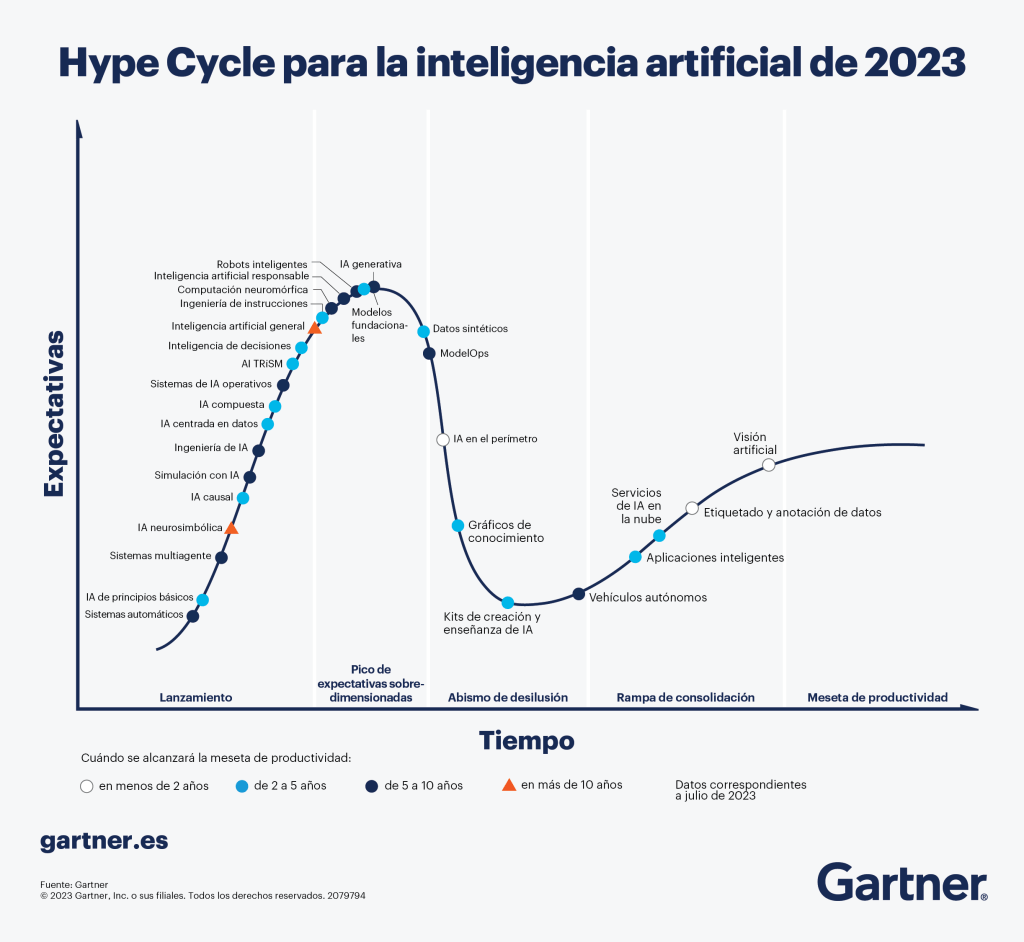The Democratization of Technology for Small and Medium-Sized Enterprises
One of the most common questions in Spain today is about the different types of artificial intelligence, as many people only know ChatGPT. However, the reality is that there is a wide range of AI-based technologies, many of which have been implemented by companies for much longer than most people realize.
Beyond the common perception centered on generative AI, the field of artificial intelligence extends far beyond that scope. Ranging from systems that simulate human reasoning within specialized domains to sophisticated algorithms capable of learning from large-scale data to identify patterns in visual or auditory inputs, artificial intelligence encompasses a wide variety of forms, each driving innovation in different sectors.
Many Technologies, Multiple Uses
Computer vision has become the most established and reliable technology for businesses today. Within this field, there are two main approaches to be aware of: classical vision and modern vision.
Classical computer vision is based on preprogrammed algorithms and hand-engineered features, such as edges or textures, for image interpretation in controlled environments. Modern computer vision, on the other hand, leverages neural networks and deep learning to automatically learn intricate data features, including patterns, color variations, and texture changes.
Reliance on Technology: Innovation in Quality Process
For a long time, quality control tasks have relied on the direct observation of operators, who examined each component individually to identify defects. While effective, this approach has clear limitations: human fatigue can lead to mistakes, and scaling up the inspection process is challenging. These challenges have led companies to look for tech-based solutions that can maintain quality without slowing down production.
Despite the evident benefits of computer vision, many companies remain hesitant to implement these innovations. We will explore the impact of computer vision in the business world and the reasons behind this resistance to change.
Can Computer Vision Be Used in Every Industry? Is Computer Vision Really Useful for Companies? Who Is Using It in Spain?
In simple terms, computer vision facilitates the automation of tasks that traditionally depend on human visual inspection to verify product or process to ensure quality standards. As a result, it can be applied in many areas. It is used in industries like automotive, pharmaceuticals, printing, and packaging, showing how versatile it is and how it can improve efficiency.
Implementing this technology has proven to be a valuable tool for companies, helping optimize real-time inspection processes, improve product quality, and significantly reduce errors and rework. Computer vision, in particular, brings benefits such as higher accuracy, faster and more consistent operations, task automation, cost savings, real-time data collection, better product quality, and improved safety.

Imagen: AI Hype Cycle – Gartner
Introducing new technologies, especially in small and medium-sized enterprises, often means weighing the novelty factor and initial investment. Naturally, companies want to understand the return on investment and how the technology can be integrated effectively. Prior experiences with intelligent camera solutions may lead to caution if expectations were unmet or support was insufficient. However, a considerable disposition exists to analyze and embrace new proposals once clear direction and reliable support for the projects are offered.
Understanding technology opens up many opportunities for Spanish companies. Even a short effort to explore the potential of artificial intelligence can help businesses see the significant impact it can have in their sector. This makes it easier to identify where AI can be applied internally, offering support and innovative solutions through a clear understanding of the technology’s scope and the unique value it can add.
Investment in non-physical technologies, such as software or digital solutions, is still comparatively limited among Spanish companies relative to other markets that are more receptive to intangible technological innovations.
However, this situation is gradually changing: more and more small and medium-sized enterprises are beginning to integrate computer vision solutions into their operations, contributing to a progressive democratization of the market. As a result, implementing this technology is no longer exclusive to large corporations but is becoming an accessible and transformative tool for businesses of all sizes.
The rising use of computer vision by small and medium-sized companies is driven by several key factors. Until recently, high investment costs were a barrier that only large companies could handle, but lower costs have created new opportunities. Additionally, Small and Medium-Sized Enterprises are more willing to adopt innovative technologies driven by the imperative to enhance competitiveness. A clearer understanding of how computer vision can improve process efficiency in the long term also makes it easier to anticipate return on investment, supporting the decision to implement it.
Pixelabs: Driving Innovation Through Computer Vision
Computer vision is more than just a tech tool, it’s a strategic partner that helps companies grow, improve processes, and stand out in a competitive market. Our experience shows that, when properly implemented and supported, computer vision stops being seen as a risk and becomes a real opportunity for transformation. The challenge today isn’t technology, it’s culture: being open to change.
At Pixelabs, our strength lies in ongoing support and active listening, which allows us to truly understand each client’s needs. We know there’s no one-size-fits-all solution, so we adapt our technology to various industrial sectors, always with the same goal: making process automation efficient and sustainable. Our team combines technical know-how with strategic vision to deliver strong, scalable solutions that align with each company’s objectives.
We focus on practical innovation capable of generating tangible impact on productivity, quality, and competitiveness. We believe digital transformation should not be an uncertain leap but a guided, clear, and measurable process. This is where we make the difference, bringing these solutions to companies of all sizes, with the goal of democratizing access to artificial intelligence and helping make innovation a tangible reality in Spanish industry.
References:
Novedades en IA según el Hype Cycle de Gartner de 2023
Visión Artificial en la industria: ¿Cómo optimizar tu producción? | Gurpea.